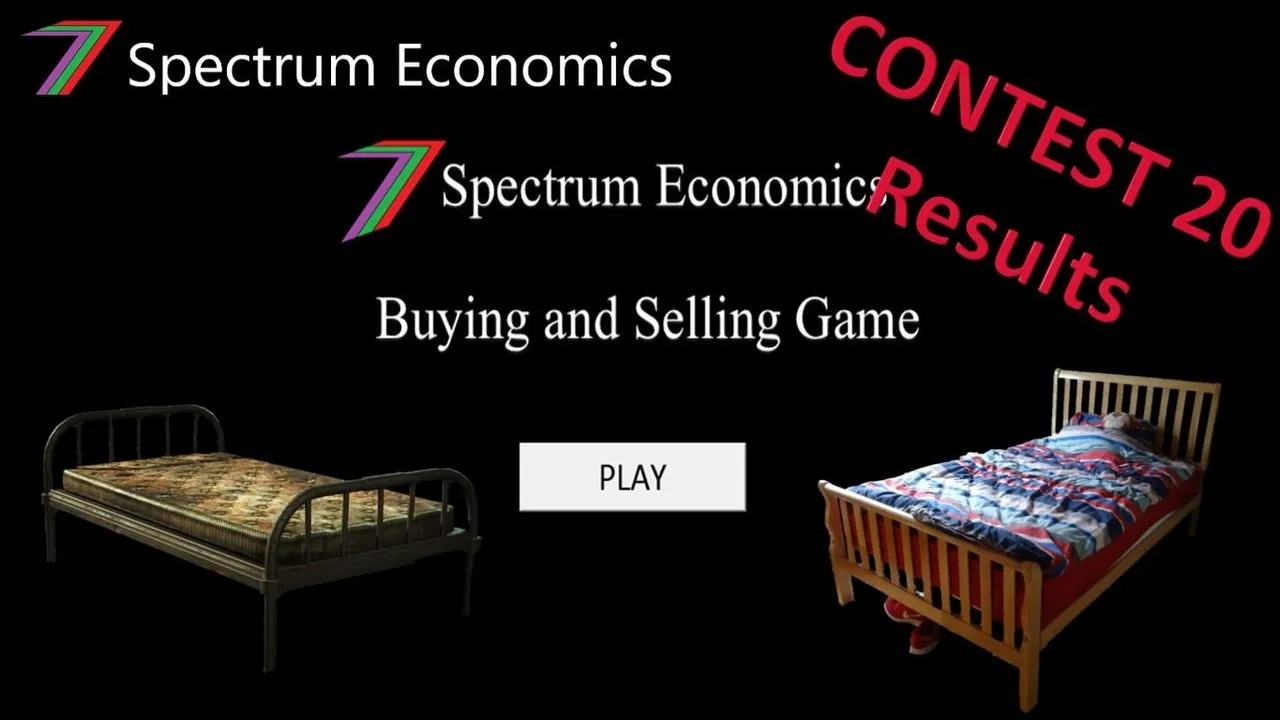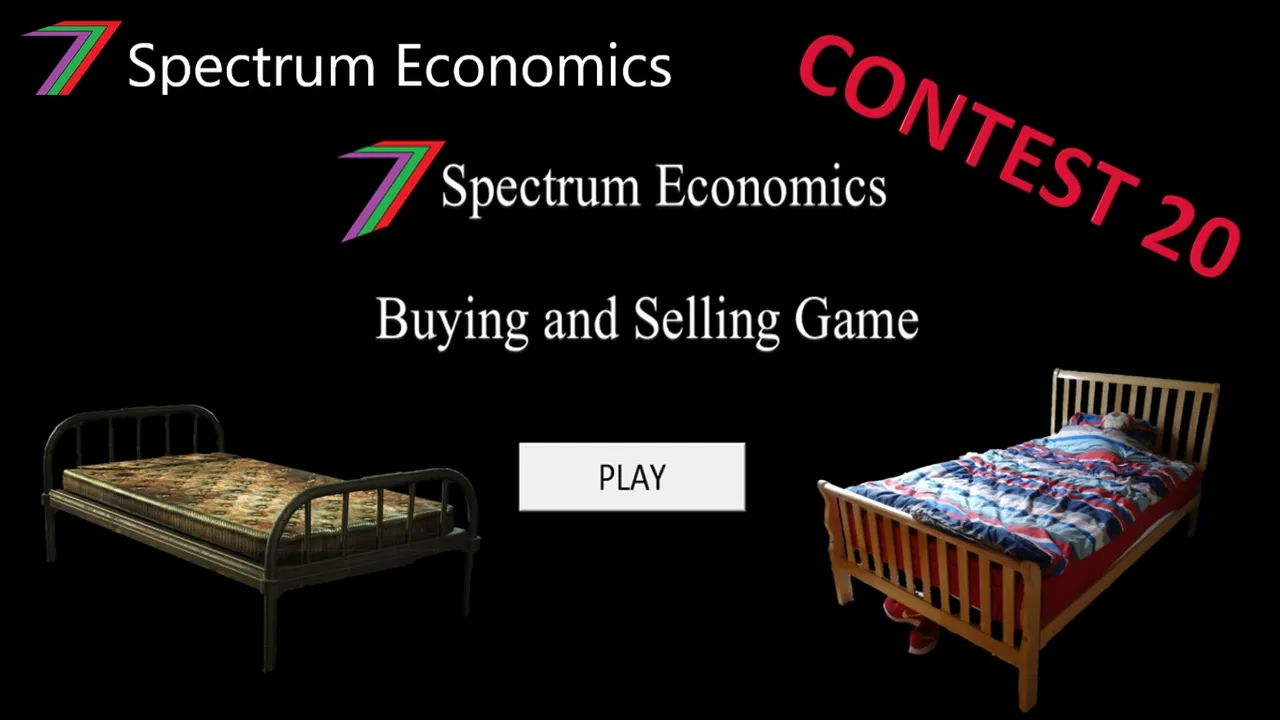Hi Everyone,
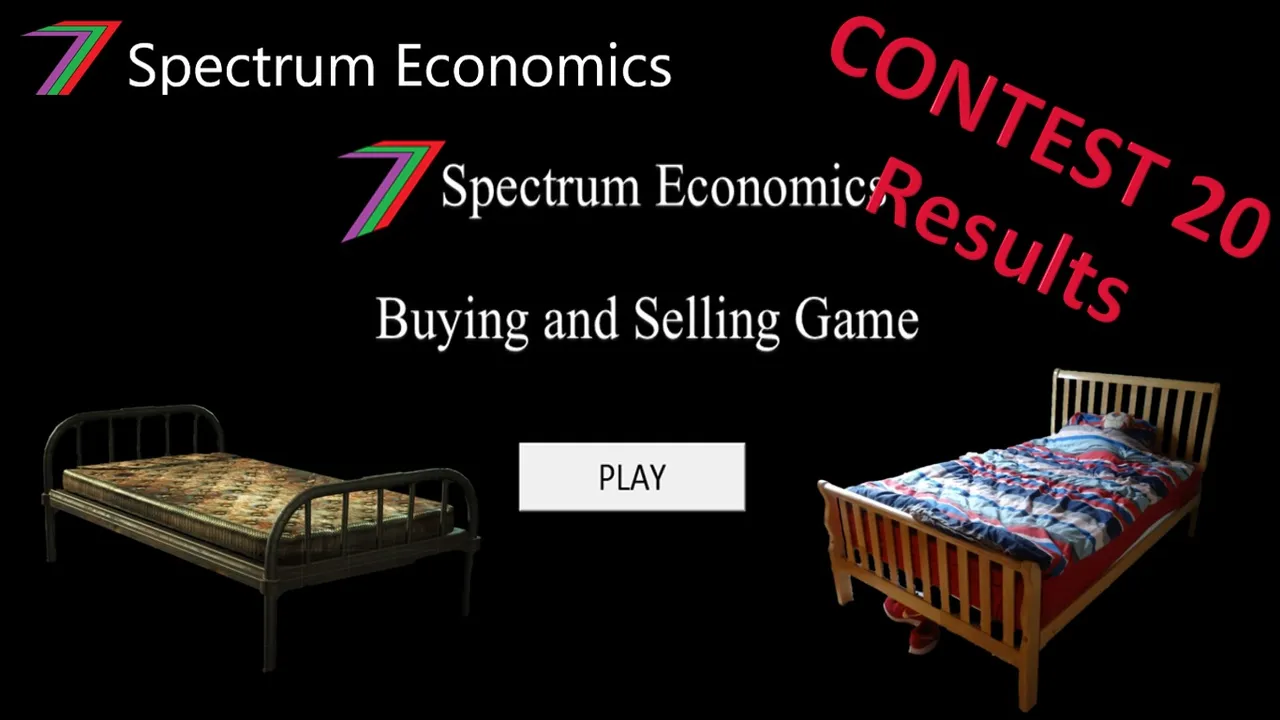
Welcome to the ‘Buying and Selling Game’ Contest 20 results post. This post contains a video of the ‘Buying and Selling Game’ Excel Model generating the selling prices for each bed for each town or city described in the initial question.
Winner determined in this video
What is the Buying and Selling Game?
For the benefit of those who have not entered this contest, here is a brief explanation of how the game works.
Participants are required to buy goods with an allocated amount of money. They are given a choice of 6 goods and all these goods are available in any of the 5 towns, cities, islands or planets in the game. The buying prices of all goods are provided in the question.
The participants are then required to sell all of their goods on a future date. The selling prices for all goods in all towns, cities, islands or planets are not provided. Instead, the question provides a triangle distribution for the selling price of each good in each town, city, island or planet. For the triangle distribution, the minimum, maximum, and mode values are provided.
The participant that has the most money after selling all his or her goods is the winner.
Responses to the contest are made in the comments section of the post. If several participants make the same amount of money, the person who entered (commented) first will win. The account with the winning entry will receive 30 Hive and the first 12 entries will be given upvotes. The most profitable buying and selling price combination is also calculated. If the winner adopts this strategy, he or she will receive an additional 5 Hive. If nobody makes a profit (i.e. zero or negative), the prize will be rolled over to the next contest.
The format of the required entry is explained in detail in the contest itself.
For a more detailed explanation, you can access the contest post using the following link.
Results of the contest
Table 1 contains the selling prices generated by the ‘Buying and Selling’ Game model for each bed in each town or city.
Table 1: Selling prices of all beds in each town or city
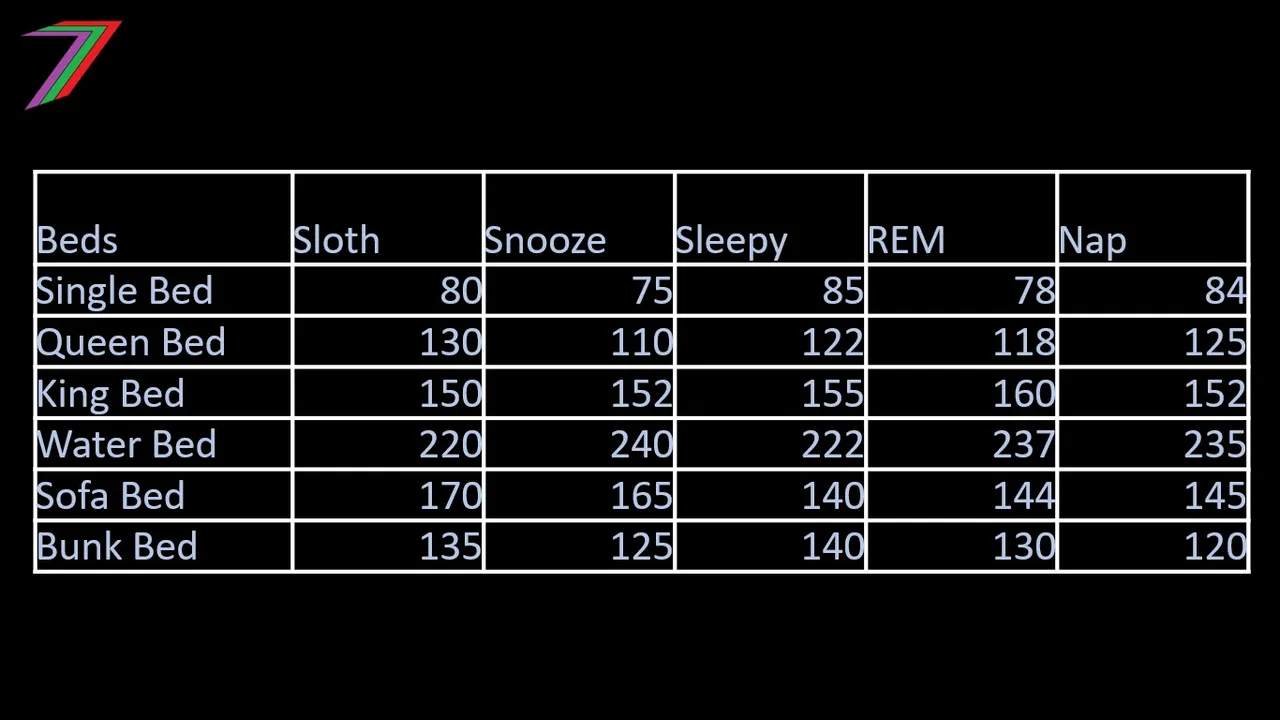
Table 2 contains responses and the profit made by each participant.
Table 2: Participant responses and profit
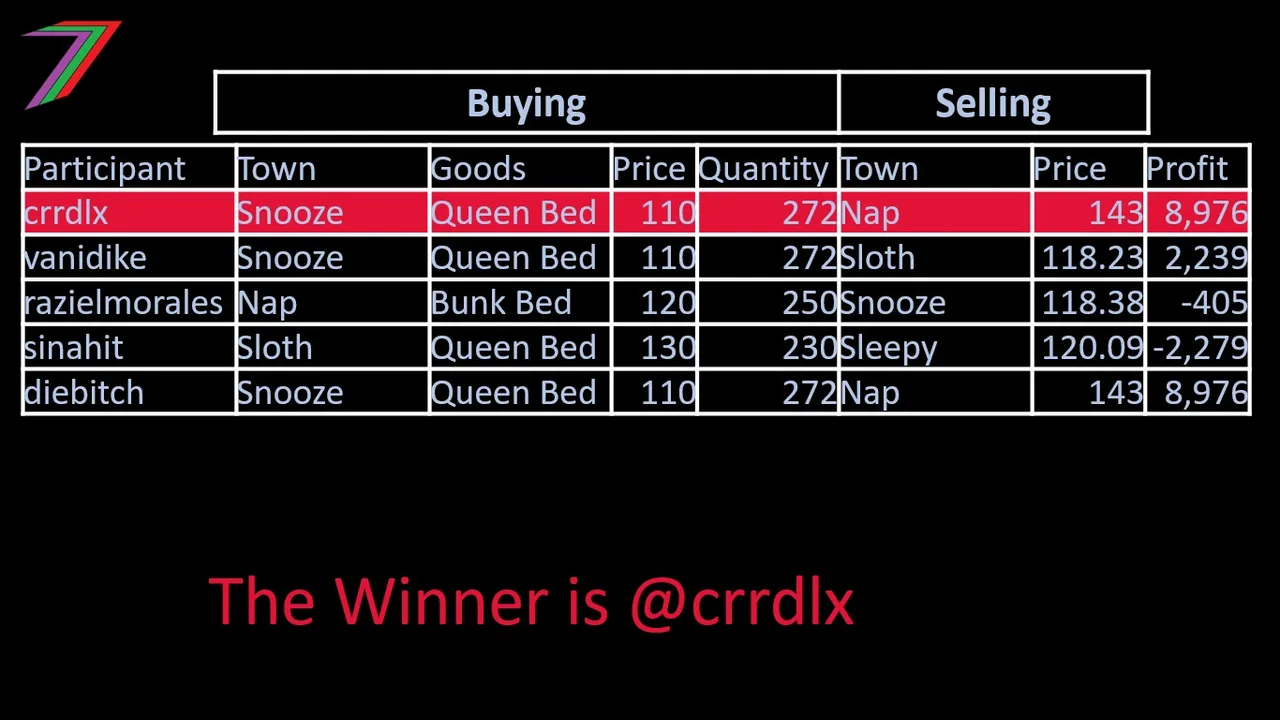
For this contest, we had two participants with the same profit. They were @crrdlx and @diebitch. According to the rules explained in the entry post, ‘If two participants make the exact same profit, the participant that entered first wins’. As @crrdlx entered first, he is the winner of this contest and will be awarded 30 Hive.
In Snooze City, he bought 272 Queen Beds at $110 each. He paid a total of $29,920.
At Nap Castle, he sold the 272 Queen Beds at $143 each. He received a total of $38,896. Therefore, he made a profit of $8,976 (38,896 – 29,920).
Highest possible profit
The strategy that would have generated the highest profit would have been to buy 400 Single Beds from Snooze City at $75 each and then selling them at Nap Castle for $130.75 (as generated by the model). This would have generated a profit of $22,300.
Table 3 contains the lowest buying prices, the highest selling prices and the highest profit for selling each type of bed.
Table 3: Lowest buying price and highest selling price
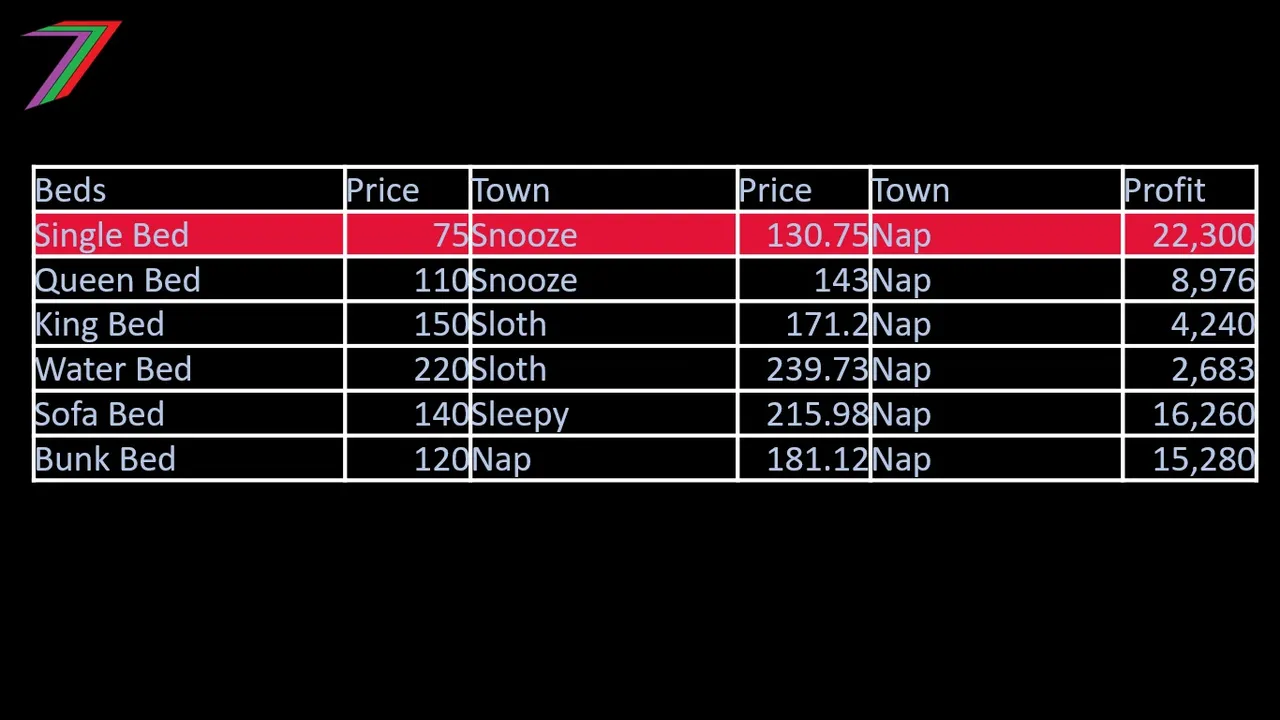
I would also like to thank @vanidike, @razielmorales, @sinahit, and @diebitch for participating.
Tips for future games (If you want to participate in the next contest, I strongly recommend you read this section of the post)
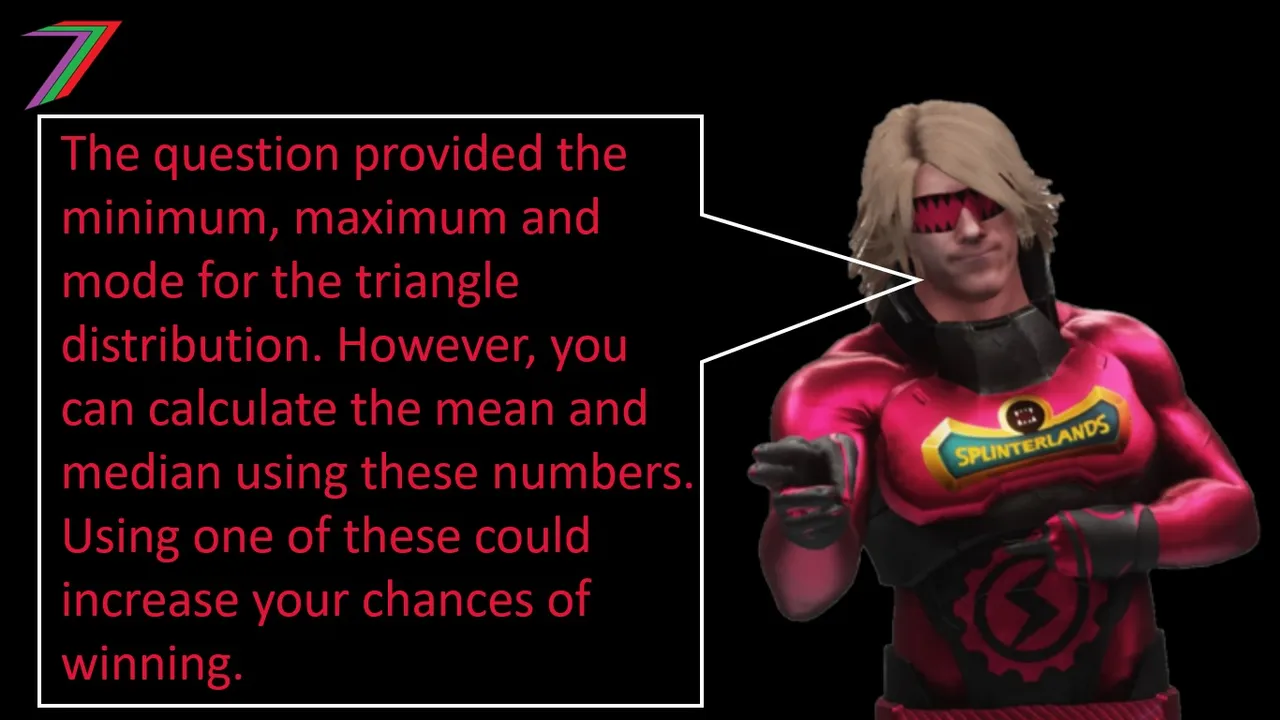
To achieve the best chance of winning the game (i.e. earning the highest profit). Participants need to make the best use of the information they are given. The participant should buy from the place that sells the good at the lowest price and sell at the place that will offer the highest price.
To inform the decision further, participants should also consider the mean and median prices for each good in each place. The mean and median for a triangle distribution can be calculated using the following formulae.
Mean = (Minimum + Maximum + Mode)/3
Median when Mode ≥ (maximum – minimum)/2 (i.e. mode closer to maximum)
Minimum + (((maximum – minimum) × (mode – minimum))/2)0.5
Median when Mode ≤ (maximum – minimum)/2 (i.e. mode closer to minimum)
Maximum - (((maximum – minimum) × (maximum – mode))/2)0.5
Proof Median

More posts
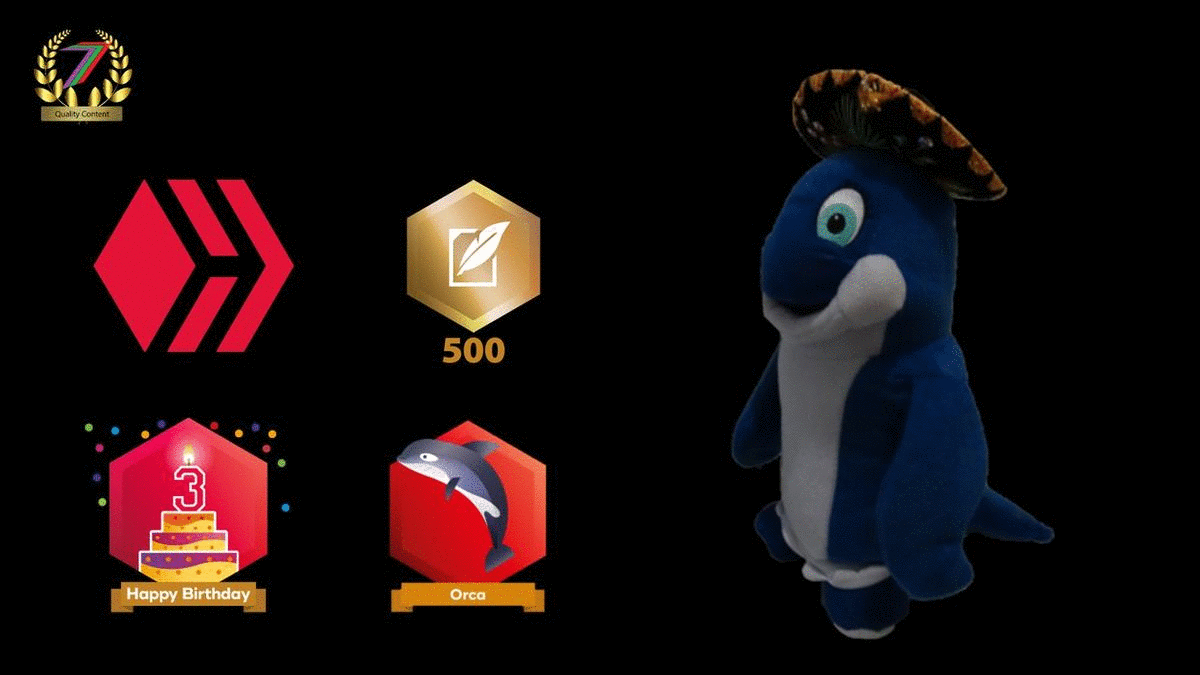
If you want to read any of my other posts, you can click on the links below. These links will lead you to posts containing my collection of works. These 'Collection of Works' posts have been updated to contain links to the Hive versions of my posts.
Spectrumecons Seven-Week Challenge (Coming Soon)
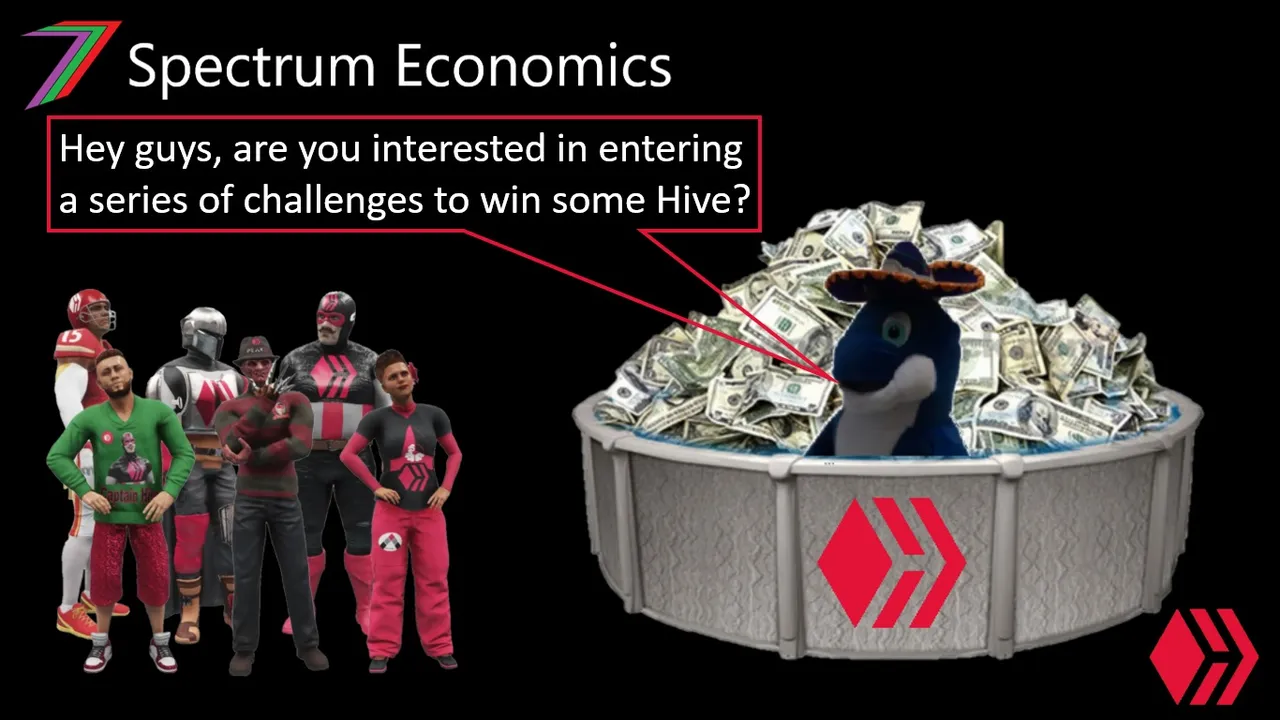
In July and August, I will be running a Seven Week Challenge Series. All the challenges will be focused around economics. Participants only need to enter through the comments section of each challenge post. Participants could win up to 60 Hive in each challenge. The first 12 participants for each challenge will receive an upvote. There will also be an overall winner for the entire series. For full details, read my post Spectrumecons Seven-Week Challenge (Coming Soon).
Future of Social Media

▶️ 3Speak
